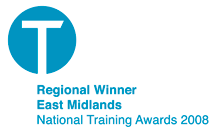NHS - PbR
Payment by Results was introduced in the NHS during the year 2003/4. It is now used extensively across the service and is under development for mental health, community health services and CCGs
Payment by Results (PBR) is intended to support NHS modernisation by paying hospitals for the work they do, rewarding efficiency and quality. It also carries risks that need to be managed effectively both locally and nationally. It is essentially a way of paying providers a fixed price for each individual case treated. Each case, such as an admission to hospital, is grouped into a healthcare resource group according to the treatment carried out and the clinical condition of the patient. Then a fixed price or tariff will be assigned to each healthcare resource group, based on the national average cost of treatment in NHS trusts in England. This article provides further information on the implementation of PBR.
Payment by Results (PbR) is the payment system in England under which commissioners pay healthcare providers for each patient seen or treated. Activity covered by PbR tariffs and currencies covers an increasing proportion of commissioner spend on acute healthcare.
The Department of Health’s PbR team currently manages the development and implementation of PbR policy through a number of advisory groups. These have produced a “Simple Guide to PbR”
The Guide contains an enlightening phrase “From patient notes to pound notes”. Developing an understanding of PbR and how it works. In particular it important for those who price tenders that they gain an understanding of how the “tariff” is calculated and how this is operated in practice.
PbR was introduce in 2003/4 and is now functioning across large swathes of the NHS. Current areas of development which are likely to be of great interest to providers are mental health and Community Services. In both areas the Guide says there is “still lots to do”. It is not just the very large purchasers such as Foundation Trusts and PCTs which are affected. It is being made clear to CCGs that there is an expectation that PbR will be applied to their purchasing systems starting in the near future. Indeed there have already been CCG tenders published with this very requirement. From the provider perspective it can be expected that PbR for the targeted services will be implemented over the next few years on a “creeping basis”
Although the NHS is undoubtedly in the lead with regard to the development of PbR, other government departments are also taking notice.
The NHS published updates regarding progress in the impplementation of PbR. This issue is for September 2012
The Home Office
The Home Office has announced eight local areas have worked alongside government to co-design the three national-level outcomes that providers will be paid against. These are: freedom from drug(s) of dependence; reduced re-offending; and health and wellbeing.
The Home Office has led on the development of an offending measure for the pilots, as this links closely with our aim of improving crime reduction through the implementation of the drug strategy. The measure allows providers to be assessed according to the offending of all individuals on their treatment caseload. This outcome builds on the success of the Drugs Intervention Programme and Integrated Offender Management, by incentivising joint working between treatment providers and criminal justice agencies and encouraging a focus on prolific drug-misusing offenders who do the most harm in communities.
International PbR
There is growing interest in PbR on an international scale, in particular with regard to aid. At this level it is thought to be important that where payments are contingent on the independent verification of results. Internationally PBR is often referred to either as 'results-based aid' (where the funding relationship is between a donor and a recipient country) or 'results-based financing'.
Potential Problems for Purchaser and Provider
For the purchaser:
- having sufficient confidence that the cash savings used to fund the payment of outcomes will actually be achieved for example that a reduction in re-offending will result in a reduction in prison capacity;
- ensuring that the price:cost element is reasonable and finding a way of translating this into binding contractual terms; and
- identifying just how far the outcomes claimed by the provider are attributable to the actual activities under the contract as opposed to other services or background factors.
For the provider
- finding and ensuring that the capital is available for to cover the start-up period of the contract. This could be particularly difficult for charities holding a limited level of reserves;
- managing cashflow during the period between claiming payment and money received. This can be particuarly potent if there should be any dispute over the amount claimed, and difficult for smaller charities;
- demonstrating that activities undertaken are contributing to the end result required by the purchaser;
- outcome/output measurement and reporting. This is already a major problem for charities undertaking public sector contracts. PbR is likely to heighten the difficulties;
- putting systems in place which measure and attribute outcomes/outputs to the contract and ensuring traceability exists throughout the provider organisation;
- having the capacity and capability to deliver this type of contract within the context of a manageable level of financial and other risks.



